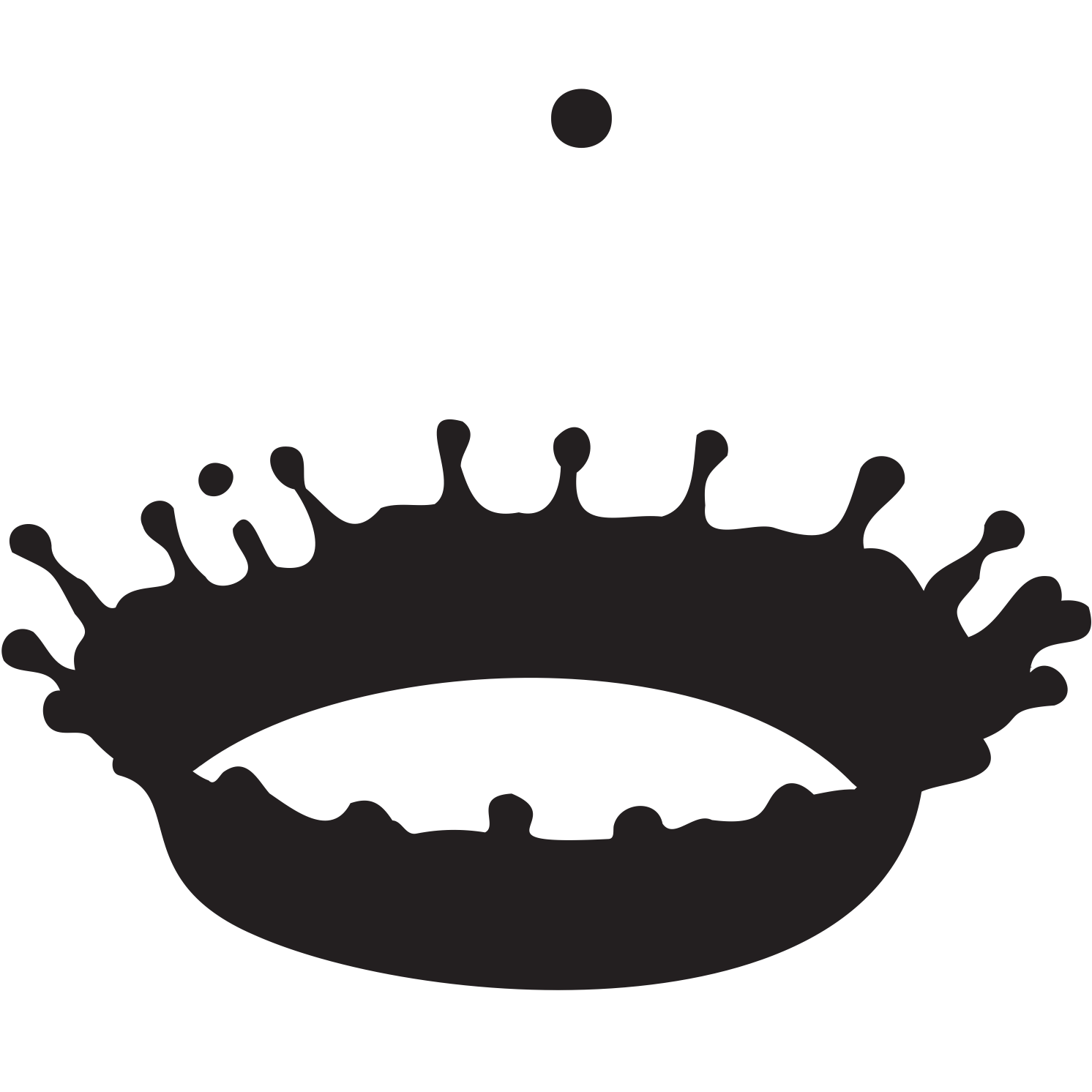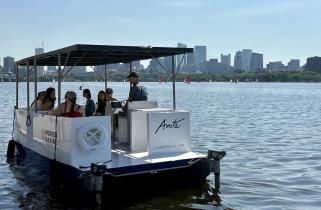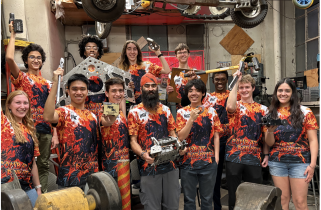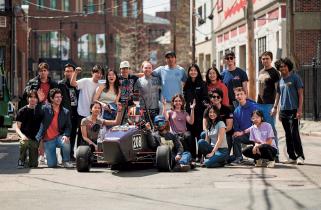The MIT Edgerton Center’s third annual showcase dazzled onlookers
On April 9, 2024, a trailer with the words “Born by Fire” emblazoned on the back pulled down the outfinite. Students, clad in orange construction vests, maneuvered their futuristic creation out of the trailer, eliciting a surge of curious bystanders. The aerodynamic shell is covered by 5 square meters of solar panels. This multi-occupancy solar car, Gemini, designed and built by the Solar Electric Vehicle Team (SEVT) is slated to race in the 2024 American Solar Challenge. Positioned just outside Lobby 13, Gemini made its inaugural public appearance at this year’s Edgerton Center Student Teams Showcase. The team’s first place trophy from an earlier competition sat atop, glistening in the sunlight.
Next, MIT Motorsports arrived with their shiny red electric race car, MY24. SEVT, embodying MIT's spirit of collaboration, paused their own installation to assist the Motorsports team in transporting MY24 into Lobby 13. Such camaraderie is commonplace among Edgerton teams. MY24 is slated to compete in two upcoming events: the FSAE Hybrid event in Loudon, New Hampshire on May 1st, followed by the FSAE Motorsports event in Michigan, later in June.
At the 3rd Annual Edgerton Center Showcase, Lobby 13 was abuzz with students, faculty, and visitors drawn in by the passion and excitement of members of fourteen Edgerton Center student teams. Team members excitedly unveiled a wide range of technologies, including autonomous waterborne craft, rockets, wind turbines, assistive devices, and hydrogen powered turbine engines. “Seeing the culmination of what MIT students can build in so many different forms was inspiring. It was great to see everyone's passion and creativity thriving in each of the team's projects,” says Anhad Sawhney ‘25, President of MITERS and Captain of the Combat Robotics Club.
In one corner, children congregated around the Combat Robotics table, captivated by clips of the team competing on the Discovery channel’s Battlebots series. Nearby, towering rockets almost brushing the ceiling captured the gaze of onlookers. Suddenly, a symphony of electrical crackles filled the air. Visitors quickly discovered the source was not an AV malfunction, but a tesla coil created by MITERS, where lightening danced to the pitch input using a computer keyboard. Established in 1973, MITERS—a member-run project space and machine shop—continues to give students the chance to tinker and create quirky inventions such as the motorized shopping cart, DOOMsled.
Adjacent to MITERS, students on the Spokes team dished ice cream into a bike-powered blender. A quick ride down the street created milkshakes for many to enjoy. Spokes is an Edgerton team of students who will bike across the country in summer 2024, teaching STEM outreach classes along the way. Their curriculum is inspired by MIT's hands-on approach to education.
One of the newest Edgerton Center teams, The Assistive Technology Club, showed an array of innovations poised to revolutionize lives. Their blind assistance team is designing an app that uses machine learning to describe the most relevant features of the environment to the blind user. Their adaptive game controller team is designing a one-handed game controller for a user who is paralyzed on one side of her body due to a stroke. Ben Lou ’25 from the robotic self-feeding device team, has a rare disease called Spinal Muscular Atrophy (SMA). He shared “Eating is a basic necessity, but current devices that help people like me eat are not versatile with different foods, unaccommodating to users with different positional needs, generally difficult to set up, and extremely expensive. The self-feeding team is completely reimagining the way a self-feeding device can work. Instead of operating with a spoon, which cannot handle a wide range of foods and is prone to spillage (among other issues), our device operates with an entirely new utensil.”
Beyond showcasing projects, the event served as a forum for idea exchange and collaboration. The MIT Wind team brought their first working prototype of their model wind turbine, which they will use as a baseline for competing in the Collegiate Wind Competition next year. “We hope to continue working on rotor optimization and blade fabrication, power conversion, and offshore foundation design to be competitive with the other CWC teams next year,” shared team captain, Kirby Heck PhD '26. “As a new Edgerton Center team, the showcase was an amazing opportunity for our team members to engage with industry partners, interact with the MIT community, and explore how we fit within the broader constellation of teams within Edgerton at MIT. We also received helpful feedback on our current design and have plenty of new ideas on how we can innovate for our next design iteration.”
The event included a short program, where SEVT captain Adrienne Wing Suen Lai ’25 and Rachel Mohommed ’27 of the Electric Vehicle Team gave a shout-out to all the teams. A special tribute was also paid to Peggy Eysenbach, the event's organizer, and the Development Officer at the Edgerton Center, with a bouquet of flowers. Edgerton Center Director Prof. Kim Vandiver welcomed the MIT community to the event and gave a brief review of the thirty year history of engineering teams, sponsored by the Edgerton Center.
Prof. Kim Vandiver believes that through all the fun and creativity, strong careers emerge. “Participation in an engineering team is great professional preparation. Upon graduation these leaders are unafraid of hard problems, and rapidly rise in project management roles,” Vandiver shares.
This article was also published on MIT News.








